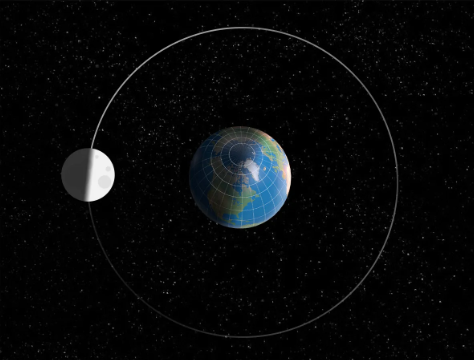The Moon’s Influence on Earth: Tides, Time, and More
- Tala Momin
- May 25
- 3 min read
Education for all
___

The Moon, Earth's only natural satellite, has a profound influence on our planet, affecting various aspects of life and the environment. From the rhythmic rise and fall of ocean tides to the measurement of time, the Moon plays a crucial role in shaping the Earth’s natural systems. This article explores the multifaceted influence of the Moon on Earth, highlighting its impact on tides, timekeeping, and other phenomena.
Tides: The Dance of Water
One of the most visible effects of the Moon on Earth is the phenomenon of tides. Tides are the periodic rise and fall of sea levels caused by the gravitational pull of the Moon and, to a lesser extent, the Sun. As the Moon orbits Earth, its gravitational force pulls on the oceans, creating bulges of water on the side of the Earth facing the Moon. This results in high tides in those areas. Conversely, on the opposite side of the Earth, another high tide occurs due to the centrifugal force created by the Earth-Moon system's rotation.
The cycle of tides is not uniform; it varies based on the Moon's position relative to the Earth and the Sun. There are typically two high tides and two low tides each day, with the timing and height of these tides influenced by the Moon's phases. During a full moon or new moon, when the Earth, Moon, and Sun are aligned, the gravitational forces combine to create higher high tides and lower low tides, known as spring tides. Conversely, during the first and third quarters of the Moon, when the Sun and Moon are at right angles relative to Earth, the tides are less pronounced, resulting in neap tides.
Tides play a vital role in marine ecosystems, influencing the behavior of various species, including fish, crabs, and other marine life. They also affect coastal environments, shaping shorelines and impacting human activities such as fishing, shipping, and recreation.
Timekeeping: The Lunar Calendar
The Moon has also significantly influenced our understanding of time. Many ancient civilizations based their calendars on the lunar cycle, which lasts approximately 29.5 days from one new moon to the next. This lunar month is the basis for various cultural and religious observances, such as Ramadan in Islam and the Jewish Passover.
The lunar calendar differs from the solar calendar, which is based on the Earth's orbit around the Sun and consists of 365 days. As a result, lunar calendars can shift in relation to the seasons, leading to variations in the timing of festivals and agricultural practices. Some cultures still use lunar calendars alongside solar calendars to track time and plan events.
In modern times, the influence of the Moon on timekeeping is less pronounced, as the Gregorian calendar, which is solar-based, is widely used. However, the Moon's phases continue to be a point of reference for various activities, including gardening, fishing, and hunting, as many people believe that certain lunar phases can influence the success of these endeavors.
The Moon’s Impact on Earth’s Rotation
The gravitational interaction between the Earth and the Moon also affects the planet's rotation. The Moon's gravitational pull creates tidal forces that cause the Earth to bulge slightly at the equator. This bulging, combined with the Earth's rotation, leads to a phenomenon known as tidal friction, which gradually slows down the Earth's rotation over time.
As a result, the length of a day on Earth has increased from approximately 22 hours when the Moon first formed about 4.5 billion years ago to the current 24-hour day. This gradual slowing of the Earth's rotation has implications for the planet's climate, weather patterns, and the evolution of life.
Cultural Significance
Beyond its scientific influence, the Moon holds significant cultural and symbolic meaning across various societies. It has been a source of inspiration for art, literature, and mythology throughout history. Many cultures view the Moon as a symbol of femininity, intuition, and change, often associating it with deities and spiritual beliefs.
The Moon's phases have also been used as a guide for agricultural practices, with many farmers planting and harvesting crops according to the lunar cycle. This connection between the Moon and agriculture highlights the deep-rooted relationship between celestial bodies and human life.
Conclusion
The Moon's influence on Earth is profound and multifaceted, affecting everything from ocean tides to timekeeping and cultural practices. Its gravitational pull shapes the natural world, while its phases inspire human creativity and cultural traditions. As we continue to explore and understand our universe, the Moon remains a constant reminder of the intricate connections between celestial bodies and life on Earth. Whether through the rhythmic tides or the passage of time, the Moon's presence is felt in countless ways, reminding us of our place in the cosmos.




Comments